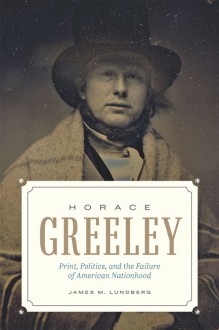
In the first two decades of the twentieth century the Socialist Party appeared to be a growing force in American politics. As Socialist agitators and newspaper editors denounced the evils of the expanding capitalist system, organizers mobilized laborers into unions and Socialist candidates throughout the country won offices at the city, state, and even federal level. Yet by the early 1920s the Socialist Party was in a decline even swifter than their rise, with its membership riven by infighting and marginalized by the increasingly conservative mood of the nation.
No figure better personified the trajectory of the Socialist Party’s fortunes during this era than Eugene Victor Debs. As the party’s five-time nominee for the presidency of the United States, Debs was buoyed by rapidly increasing voter numbers during his first four campaigns for the office. When he ran for the final time in 1920, however, he did so from a federal penitentiary in Atlanta thanks to a wartime conviction for sedition. It was a testament to Debs’s appeal that even while incarcerated he received over 900,000 votes, though as a percentage of the vote is was little more than half of the total he had received in his last bid for the office. No subsequent Socialist party candidate was ever able to improve upon that result, however.
In his biography of Debs, Nick Salvatore makes it clear that a major reason why none of Debs’s successors could duplicate his achievement was because none brought what he did to the party. As a longtime labor leader, Debs possessed an unmatched credibility with working-class Americans, his sacrifices on behalf of whom was part of his appeal. Yet as Salvatore explains, the basis of Debs’s approach to socialism was far more complex than that. The son of French immigrants, Debs left school at an early age to work for one of the local railroad companies. In 1875 he joined the Brotherhood of Local Firemen, and quickly distinguished himself with his tireless activism on the organization’s behalf. It was as a union leader that Debs became nationally famous, as he worked to establish an industrial union in response to the growing centralization and corporatization of the railroad business in Gilded Age America.
The demise of the American Railway Union (ARU) in the aftermath of the Pullman Strike in 1894 convinced Debs of the inadequacy of unionization as a response to business concentration. While in jail for violating a federal injunction, Debs began reading texts advancing socialist ideas. Upon his release, Debs pushed the remnants of the ARU to join with others to create a new political party advocating for socialist policies. Debs’s prominence as a labor activist made him a natural choice as their presidential candidate in 1900, a task he accepted reluctantly but threw himself into with determination. Salvatore devotes as much attention to history of the Socialist Party during this period as he does to Debs himself, detailing the infighting that shaped its development. As he had as a labor leader Debs stayed clear of factional disputes, preserving his appeal within the fractious party but at the cost of allowing the personal and ideological disagreements to fester.
Though Salvatore describes the issues that divided Socialist Party leaders, he emphasizes that these were of secondary concern to Debs. Unlike the doctrinaire approach of many of its members, Debs grounded his Socialist advocacy in the Protestant theology and republican ideology he had inculcated since his youth. By positing socialism as the path towards realizing the nation’s democratic and egalitarian ideas, he made it far more appealing to American voters than abstract theories ever could have been. Coupled with Debs’s bona fides as a labor leader and his earnest and effective style of speechmaking, he became the party’s greatest asset for advancing its vision for a better tomorrow.
Yet Debs was far from the only critic of industrial capitalism in these years. As Salvatore notes, other presidential candidates were also denouncing its excesses and offering political solutions in an effort to win voters. While each election seemed to bring the Socialist Party closer to a breakthrough, the 1912 presidential election proved a high-water mark for their fortunes. As Progressive era reforms and the outbreak of war in Europe shifted the public discourse to other matters. Debs’s criticisms of the Wilson administration eventually resulted in his arrest and conviction, while his subsequent prison term proved detrimental to his frail health. Released after President Warren Harding commuting his sentence, Debs spent his final years as a shadow of his former self, trying to navigate a fractured socialist movement that struggled for relevance in the Roaring Twenties.
By situating Debs’s life within the context of the developing capitalist economy, Salvatore conveys insightfully the factors in his subject’s own transformation from a respected trade unionist and promising Democratic politician into the leading Socialist figure of his age. As a result, Debs goes from being a marginal political figure in the nation’s history to one at the heart of the choices faced by millions of Americans as values and social structures evolved in response to industrialism and the changes it brought. It makes for a book that is an absolute must-read for anyone interested in learning about Debs, and one that is unlikely ever to be surpassed as a study of his life and times.

 Log in with Facebook
Log in with Facebook 









